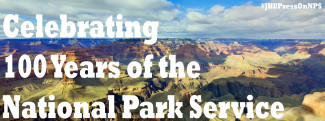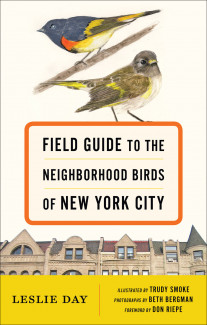
Johns Hopkins UniversityEst. 1876
America’s First Research University
Filled With Gratitude for Our Parks

The National Park Service (NPS) celebrates its centennial anniversary in the month of August! NPS has served as a valuable resource for many of our authors, both professionally and recreationally. To commemorate the occasion, our authors have taken to the blog to pay homage to “America’s best idea”! Check back with us throughout the month of August for more #JHUPressOnNPS! (Series photo credit: Wikimedia)

Parks are on my mind a lot lately. Our apartment faces the southern end of Fort Tryon Park in northern Manhattan and our son’s apartment faces the northern end. A ten-minute walk to get to our granddaughter through this exquisite park, beautiful in all seasons, is always a happy, healing, and educational experience. As a New York City naturalist, I’m drawn like a magnet to what species of insects are emerging, what new nests are being built, how many skunks I’ll see at dusk, and what the woodchucks are feeding on today. Just yesterday, as my husband and I passed the large meadow just north of our apartment, the air was humming with large, harmless (to us) and beneficial cicada wasps, and the diminutive house sparrows that were darting in and out of the meadow from the tree line, trying to nab them for supper.
When our son was born 36 years ago, we lived on a houseboat at the 79th Street Boat Basin, a city marina in New York’s Riverside Park. To get to my grandmother’s apartment I’d walk my baby boy through Riverside Park. On nice days my Nanny would meet us on a bench on Riverside Drive facing the park. I don’t think I could live in New York City without parks. And I don’t think I could live in any place other than New York City. Nature and the city have always sustained me: my love for natural beauty, and the throbbing heart of humanity.
Living in Riverside Park for almost 40 years was the inspiration for all three of my books on the natural world of New York City. When you live in or near a park, you see the relationships between plants and animals, the soil, and water, whether it’s a brackish river like the Hudson that supports 200 species of fish, or a fresh water spring fed pond like Tanner’s Pond in Central Park, that attracts birds who are thirsty or need to bathe on hot days. You get to see the big picture: the interwoven threads of all living organisms, and it is breathtaking.
In the 1960s I joined the pilgrimage of my generation to the Bay Area. Driving across country, it was when we entered the dark green forests of the California Sierra’s that the trajectory of my life changed. I settled in San Francisco and as I looked west I saw the Bay, east I saw mountains. Everywhere I looked there was nature, though at a distance. When we camped in Yosemite National Park, wild flowers and flowing streams were at my feet, birds and butterflies were everywhere and towering mountains surrounded the valley. I was completely mesmerized and knew, without a doubt, that I needed to be close to nature. I needed it like I need air, water, food, and love. I moved to a houseboat in Sausalito, and four years later, to a houseboat at the 79th Street Marina.
In Ken Burns’ documentary on our national parks, the narrator, Peter Coyote, says that these parks “became the last refuge for magnificent species of animals that otherwise would have vanished forever. And they remain a refuge for human beings seeking to replenish their spirit….” This can also be said for our state parks and our city parks. Without our parks, there would not be the great biodiversity that we see today. It took men and women who were visionaries of their times to fight for and legislate protection of our natural heritage. Frederick Law Olmstead, Calvin Vaux, Abraham Lincoln, Teddy Roosevelt, John Muir and almost every President since TR have set aside land to be protected forevermore. Rachel Carson’s research into the death of birds caused by DDT saved our land, our animals and us. The New Jersey State Federation of Women’s Clubs saved the magnificent Palisades from destruction, with the help of John D. Rockefeller, Jr. who created the exquisite Fort Tryon Park with unobstructed views of the Hudson River and the Palisades.
This is the one hundredth anniversary of our National Parks and there are many who we need to thank for passing on the necessary, life-enhancing, and, for many human and non-human animals and other life forms, life-saving gifts of our parks.
Leslie Day is a New York City naturalist and the author of Field Guide to the Natural World of New York City, Field Guide to the Street Trees of New York City, and her latest book, Field Guide to the Neighborhood Birds of New York City. Dr. Day taught environmental science and biology for more than twenty years. Today, she leads nature tours in New York City Parks for the New York Historical Society, the High Line Park, Fort Tryon Park Trust, Riverside Park Conservancy, and New York City Audubon.


